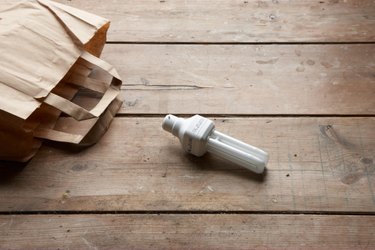
Paper bags have been an American staple since they were invented here in the late 1800s. While they have long been touted as an environmentally friendly alternative to plastic, they take a lot of water and energy to produce and don't break down too easily in landfills. Bags are constructed from dried tree bark, which is turned into pulp and then back into colored paper sheets. While you might not be surprised about their lack of renewability, you might be by the process required to make them.
History
Video of the Day
Francis Wolle patented the first paper bag-making machine in 1852 in the United States. Wolle and his brother went on to found Union Paper Bag Machine Company and a paper packaging plant in 1869, which could produce 1,000 feet of paper in one minute. That plant still operates today, but is owned by a different company -- International Paper.
Video of the Day
Production
While today's paper making machines are more advanced than Wolle's first device, the principle remains the same. Paper bags are made on large machines that require much energy and natural resources. One paper bag takes 1 gallon of water to make as well as fossil fuels to run the machines that make the bags.
Paper bags are made out of tree pulp that comes from trees that have been dried for at least three years. Dried tree bark is stripped, cut into 1-inch chips and cooked into pulp under intense pressure and heat. Pulp is then washed, bleached, colored and turned into kraft paper, coming from the German word for strong. This kraft paper is then formed, cut and glued into the shape of a bag by industrial machines
Use
In addition to carrying groceries and packing lunches, there are many useful things you can do with a paper bag. It's strong and sturdy construction make a paper bag perfect for use as a trick or treat bag, present wrapping, dress-up vest, storage bag, writing paper or book cover. You can also use your paper bag to bring home groceries from the store for at least three visits, or until you notice the bag starting to break, in which case you may want to cut it up and use it as a wrapping for a package that you're mailing.
Degradability
Paper has long been touted as an environmentally-friendly and even "green" alternative to plastic bags. Many people feel better using a paper bag because they believe it will degrade faster than plastic and not harm the environment. However, in "Taking Aim at All Those Plastic Bags," published on April 1, 2007, "The New York Times" reported that paper bags generate more air and water pollution and require more energy to produce than plastic bags. The bags also take longer to degrade and take up more space in landfills. Unlike polyethylene bags, paper bags will eventually break down, but if you're concerned about saving the environment, reusable cloth shopping bags are the "greenest" option.